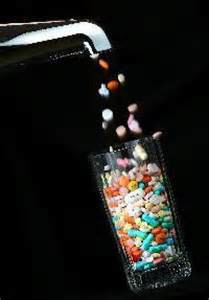Do you have toxic tap water?
 We are exposed to chemicals every single day; the shampoo we use in the morning shower, the Tylenol we take for a headache, the dishwasher detergent used to wash our dishes, the laundry detergent for the gazillion loads of laundry we do. As we look around us, the list could go on and on. So where do you think all these chemicals end up? That’s right, down the drain and directly back into our water supply! CBS News recently reported that when they tested the drinking water in New York City, they discovered that there were 14 different drugs and personal care products found in the city’s drinking water; this isn’t the only place where these contaminates have been found either.
We are exposed to chemicals every single day; the shampoo we use in the morning shower, the Tylenol we take for a headache, the dishwasher detergent used to wash our dishes, the laundry detergent for the gazillion loads of laundry we do. As we look around us, the list could go on and on. So where do you think all these chemicals end up? That’s right, down the drain and directly back into our water supply! CBS News recently reported that when they tested the drinking water in New York City, they discovered that there were 14 different drugs and personal care products found in the city’s drinking water; this isn’t the only place where these contaminates have been found either.
Another study took samples from 50 large size water plants and discovered that of the 56 pharmaceuticals they looked for, more than half of the water tested positive for at least 25 different drugs. While health officials have said that the amounts present in the drinking water would not be harmful for human consumption, they have not evaluated the complete cocktail of these drugs. And to be honest, do we really want to be consuming unnecessary medications – or drinking detergents, even in small doses?
Let’s take a look at the 14 different substances found in New York City’s water supply:
- Acetaminophen – a pain reliever
- Butalbital – a sedative or hypnotic drug
- Caffeine – a stimulant
- Carrbamazepine – an anti-convulsant
- Diltiazem – a drug used to treat high blood pressure and angina
- Gemfibrozil – used to treat high cholesterol
- Cotinine – a byproduct of nicotine, found in tobacco
- DEET – a toxic chemical used in insect repellants
- Ibuprofen – a pain reliever
- Iopromide – used as a contrast in X-rays and medical imaging
- Paraxanthine – a stimulant chemically related to caffeine
- Meprobamate – a sedative used as a muscle relaxer and anti-anxiety drug
- Primidone – an anti-epileptic drug
- Sulfamethoxazole – an antibiotic typically used in conjunction with other drugs
This list is quite frightening actually, there are some serious and scary contaminates in there, particularly when combined. Even if health officials say they are OK – are they really? The good news is that a water filtration system can filter out the majority of these contaminates and then there doesn’t have to be that fear that you are consuming something potentially harmful and unknown. The World Health Organization (WHO) states that while chlorination will remove as much as 50% of pharmaceuticals from drinking water, a Reverse Osmosis (RO) system can remove more than 99% of large pharmaceutical molecules. For more information on RO water filtration systems you can visit our website at www.rayneoffullerton.com.


